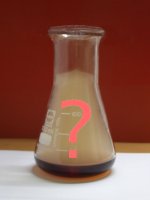


Simple compounds - surprising reactions
This page describes some remarkable reactions of common chemicals, which are known quite well at high schools, lower grade classes in universities, and also by chemistry hobbyists. These chemicals are used frequently for educational purposes in demonstrations at high schools and universities. Because these chemicals are known well and are used frequently in all kinds of demonstrations, many people, including professionals, think that these chemicals have nothing surprising and new anymore. This page, however, describes some remarkable reactions, which are not described frequently in literature, using common reagents only under ordinary conditions. The reactions are described here at a fairly high level of detail. Unfortunately, most of the observations cannot be explained, simply because no literature was found, which describes the reactions. Some of these reactions were discussed on Usenet, group sci.chem and were partially resolved, but most of the reactions have eluded the contributors to the discussions up to now.
Just to get an idea of the kind of reagents used, some of them are mentioned here. This is not a complete list, it is provided here to give an impression of the compounds used. As the list shows, nothing special, expensive or rare is included:
- sodium sulfite
- potassium iodide
- potassium bromide
- copper (II) chloride (either hydrated or anhydrous)
- copper sulfate pentahydrate
- copper metal
- sodium nitrite
- sodium thiocyanate
- dilute sulphuric acid
- hydrochloric acid
- dilute hydrogen peroxide
Potassium salts and sodium salts can be exchanged in all cases. In most of the cases, ammonium salts may also be used instead of potassium or sodium salts. This also demonstrates that no special constraints are imposed on the experimental conditions.
Another point to be mentioned here is that none of the reactions requires special apparatus or special conditions. All reactions are carried out at room temperature in aqueous solutions and nothing more than simple test tubes, little bottles/flasks and some stoppers are needed for carrying out these experiments. This is also what makes these experiments so appealing.
Here, a list of some remarkable experiments is given. By clicking on the links, a description of the experiment is given.
-
mixed valency coordination complex of copper (I) and copper (II)
-
fluoro complex of titanium, mixed valency complex of titanium (III/IV)
-
dissolving molybdenum in nitric acid: formation of strange red powder